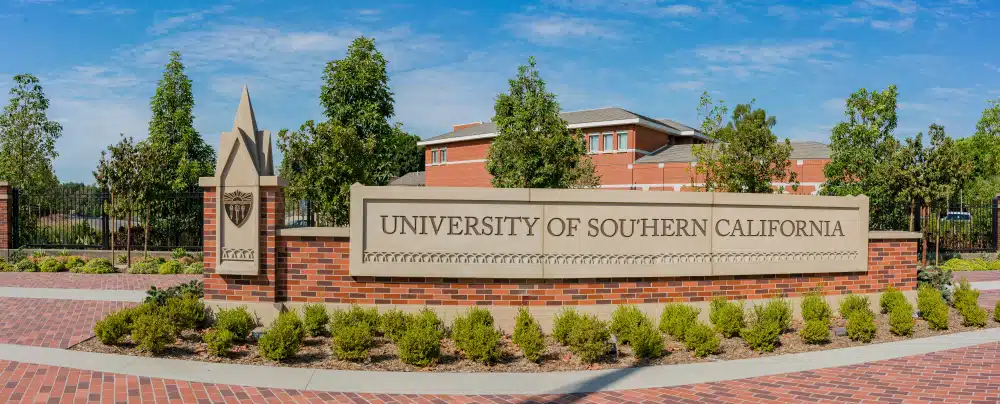The USC Common Data Set
Are you curious about how universities collect and use data to improve their programs and services? Look no further than the Common Data Set, a standardized report that provides essential statistics and information about universities to prospective students, parents, and policymakers. In this article, we’ll take a closer look at the USC Common Data Set and how it informs and shapes the university’s policies and practices.
Understanding the Common Data Set
What is the Common Data Set?
The Common Data Set (CDS) is a collaborative effort among higher education institutions and publishers to provide accurate and comprehensive data about colleges and universities. The CDS contains standardized information on a range of topics, such as enrollment, demographics, admission requirements, and financial aid, to help students and families make informed decisions about higher education options.
The CDS was first developed in the late 1990s as a way to streamline the collection and reporting of data across institutions. Prior to the CDS, each college and university had its own format for reporting data, which made it difficult for students and families to compare different institutions. The CDS has since become the industry standard for reporting higher education data.
Importance of the Common Data Set in Higher Education
The Common Data Set serves as an essential tool for students, parents, and policymakers as it provides information that can be used to compare the values and quality of different universities. By providing easy access to important statistics such as enrollment and graduation rates, acceptance rates, and diversity, the CDS helps to make the college search process more transparent and equitable.
Moreover, the CDS helps to ensure that students and families have access to accurate and reliable information about higher education institutions. This is particularly important given the rising cost of college and the increasing importance of a college degree in today’s job market.
How Universities Use the Common Data Set
Universities utilize the CDS to assess their performance against their peer institutions and national benchmarks. The data not only helps universities understand their students better but also informs their strategic planning and policy-making process. Through the CDS, universities can identify areas where they need to improve and take corrective measures that align with their mission and goals.
For example, universities can use the CDS to track changes in their enrollment and demographics over time. This information can be used to identify trends and patterns, such as changes in the number of international students or the proportion of students from low-income backgrounds. Universities can then use this information to develop targeted recruitment and retention strategies.
In addition, universities can use the CDS to benchmark their performance against other institutions. This can help universities identify areas where they are lagging behind their peers and develop strategies to improve their performance. For example, if a university has a lower-than-average graduation rate, they can use the CDS to identify peer institutions with higher graduation rates and study their policies and practices to identify best practices that can be adopted.
Overall, the Common Data Set is an invaluable tool for both students and universities. It helps to ensure that students have access to accurate and reliable information about higher education options, and it helps universities improve their performance and better serve their students.
Key Components of the USC Common Data Set
General Information
The University of Southern California, commonly referred to as USC, is a private research university located in Los Angeles, California. USC was founded in 1880 and is the oldest private research university in California. Its mission is to provide students with a world-class education and to advance knowledge through research and scholarship. USC is accredited by the Western Association of Schools and Colleges Senior College and University Commission.
In terms of enrollment, USC is home to over 47,000 students, both undergraduate and graduate. Of these students, approximately 19,000 are full-time and 28,000 are part-time. Tuition and fees for the 2021-2022 academic year are $60,275 for full-time undergraduate students and $2,078 per unit for part-time undergraduate students. Room and board charges vary depending on the type of housing and meal plan selected.
Enrollment and Persistence
USC has seen a steady increase in enrollment over the past few years. In fall 2020, the university had a total enrollment of 47,310 students, which is a 1.3% increase from the previous year. The freshman retention rate for fall 2019 was 97%, indicating that the vast majority of students who begin their studies at USC continue on to their sophomore year. The six-year graduation rate for the cohort of students who began their studies at USC in fall 2014 was 92%.
USC is committed to providing access to higher education for a diverse group of students. In fall 2020, the university enrolled 3,401 transfer students and 5,903 international students. Additionally, 43% of USC students receive need-based financial aid and 20% receive non-need-based aid.
First-Time, First-Year (Freshman) Admission
The freshman admission process at USC is highly competitive. For the fall 2020 entering class, the university received 64,256 applications and admitted only 9,535 students, resulting in an acceptance rate of 14.8%. The average SAT score for admitted students was 1445 and the average ACT score was 33. The average high school GPA for admitted students was 3.79.
Transfer Admission
Transfer students are an important part of the USC community. For fall 2020, the university received 11,035 transfer applications and admitted 3,401 students, resulting in an acceptance rate of 30.8%. The average GPA of admitted transfer students was 3.7.
Academic Offerings and Policies
USC offers over 400 academic programs across 23 different schools and colleges. These programs include undergraduate majors, minors, and certificates, as well as graduate and professional degree programs. The most popular majors at USC include Business Administration, Psychology, and Biological Sciences.
USC has a number of academic policies in place to support student success. For example, the university offers credit transfer for courses taken at other accredited institutions, as well as placement exams to determine appropriate course placement. Additionally, USC provides academic support services such as tutoring, academic coaching, and disability services.
Student Life
USC is known for its vibrant campus life and diverse student body. The university offers a variety of housing options, including traditional dormitories, suite-style apartments, and off-campus apartments. USC also has a wide range of dining options, from fast-casual eateries to full-service restaurants.
USC is home to over 1,000 student clubs and organizations, including academic clubs, cultural organizations, and special interest groups. The university also has a strong athletic program, with 21 varsity sports teams and numerous club and intramural sports. USC is also home to a thriving Greek life community, with over 50 fraternities and sororities.
Annual Expenses
The cost of attending USC can vary depending on a number of factors, including the student’s residency status, housing choices, and financial aid package. For the 2021-2022 academic year, the estimated cost of attendance for a full-time undergraduate student living on campus is $79,078. This includes tuition and fees, room and board, books and supplies, and personal expenses. USC offers a variety of financial aid options to help students cover these costs, including scholarships, grants, and loans.
Financial Aid
USC is committed to making higher education accessible to all students, regardless of their financial background. In fall 2020, 43% of USC students received need-based financial aid, with an average award of $41,000. Additionally, 20% of USC students received non-need-based aid, with an average award of $21,000. USC offers a variety of financial aid options, including merit-based scholarships, need-based grants, and work-study programs.
Instructional Faculty and Class Size
USC has a faculty-to-student ratio of 1:9, meaning that for every one faculty member, there are nine students. The university employs over 4,000 full-time and part-time instructional faculty, with 87% holding a terminal degree in their field. The average class size at USC is 26, and 54% of classes have fewer than twenty students.
Degrees Conferred
USC is proud to confer a wide range of undergraduate, graduate, and professional degrees. In the 2019-2020 academic year, the university conferred a total of 21,596 degrees. Of these, 14,361 were undergraduate degrees and 7,235 were graduate and professional degrees. The most popular fields of study for undergraduate students were Business Administration, Social Sciences, and Visual and Performing Arts.
In conclusion
As you can see, the USC Common Data Set is a vital tool that provides students and families with the information they need to make informed decisions about higher education. By standardizing data that is commonly used to compare colleges and universities, the CDS helps to make the college search process more transparent and equitable. Additionally, USC uses the CDS to understand its own performance and make data-driven decisions to improve the quality of the education and services it offers to its students.
With its commitment to transparency and excellence, USC continues to set the bar high for higher education. If you’re considering USC for your college education, we encourage you to explore the USC Common Data Set to gain valuable insights into the university’s programs and policies.
How AdmissionSight can help you with college admissions
AdmissionSight is a college consulting firm that provides personalized assistance to students throughout the college admissions process. Here are some ways that AdmissionSight can help you:
Admissions strategy: AdmissionSight can help you develop a strategic plan for your college application process. Our professional consultants can assist with identifying schools that are a good fit for your academic, extracurricular, and personal goals and help you plan and prioritize your application strategy.
Application review: AdmissionSight can review your application and provide feedback on how to improve it. We can offer suggestions on how to make your application stand out and highlight your strengths and unique qualities.
Essay coaching: AdmissionSight can help you craft compelling essays that showcase your personality, goals, and achievements. We can guide you through the essay writing process and provide feedback on your drafts to help you refine your writing.
Interview preparation: AdmissionSight can provide interview coaching to help you feel confident and prepared for your college interviews. Our experts can offer tips on how to present yourself professionally and how to answer common interview questions.
Extracurricular planning: AdmissionSight can help you plan and develop your extracurricular activities to make them more impactful and meaningful. We can suggest activities that align with your interests and goals and provide guidance on how to demonstrate your leadership and initiative.
Overall, AdmissionSight can provide valuable guidance and support throughout the college admissions process to help you maximize your chances of getting accepted into the college of your choice.
With a high success rate of over 75%, we have built a strong network in the past decade. Book an initial consultation today, free of charge!






































